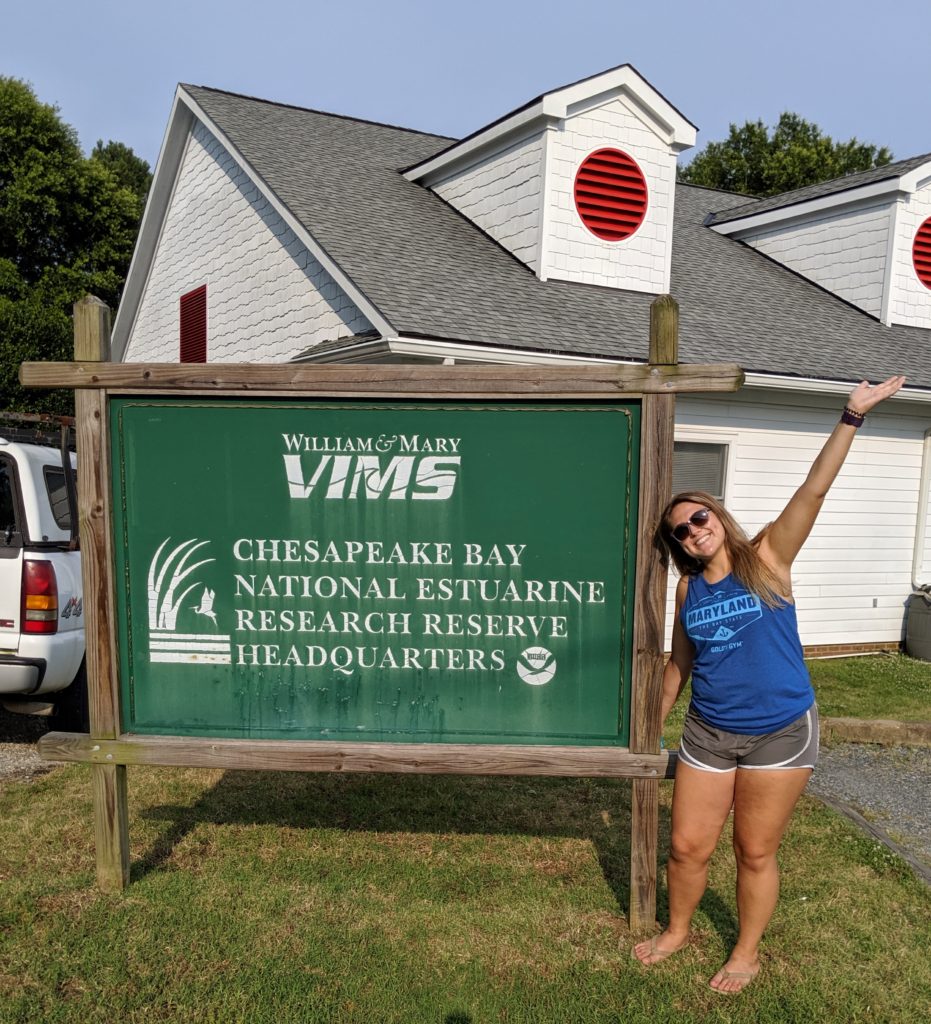I was honored at the end of my sophomore year to receive the National Oceanic and Atmospheric Administration (NOAA) Ernest F. Hollings Undergraduate Scholarship for 2018. This scholarship program provides financial assistance for two academic years and one summer internship between junior and senior year. I am thankful for the help of my advisers and Dr. Buonaccorsi, the biology professor who is the Juniata adviser for the application. He did not really know who I was, but was willing to help me throughout the whole application process and my essay.
This past summer I participated in my NOAA Hollings Scholarship internship at the Chesapeake Bay National Estuarine Research Reserve (CBNERR-VA) at the Virginia Institute of Marine Science (VIMS). Since VIMS is the graduate school of marine science for the College of William and Mary, I learned more about graduate school options for my future.
My Project: Translating Chesapeake Bay Research and Stewardship Projects into Useful, Hands-on Education Products

I worked with both the stewardship coordinator, Scott Lerberg, and the education coordinator, Sarah Nuss, to enhance education on Chesapeake Bay environmental issues and current restoration projects. I only had nine weeks to plan, conduct, and analyze my project. The 10th week was a presentation at NOAA headquarters in Silver Spring, MD.
My project was twofold: first, I created a lesson plan based on the current National Estuarine Research Reserve System’s thin-layer placement (TLP) project, which is a marsh restoration strategy in the face of sea level rise. Then, I made an interactive digital version using Esri Story Map. This project was unique to me because I am an Environmental Science POE, but I really enjoy science education and outreach.
Through this experience, I learned a lot about the lack of resources and difficulties teachers are facing in our developing technological society. I also was able to understand how students respond to technology and what learning styles they prefer. Overall, I was able to create the first story map for CBNERR-VA and understand how to help science teachers effectively teach science while using technology.
Personally, I learned how to conduct research in education, effectively teach science, design a lesson plan, create a story map, and the importance of estuarine stewardship. I gained a new understanding in my role as a scientist with a passion for outreach. Interacting with the students during my lesson and watching them interact with the digital lesson was one of the highlights of my summer. It was great to see my hard work have a positive impact on students.
Want to see my Story Map? Follow this link: https://arcg.is/1WfeaL
NOAA also fully funds up to two conferences and I also received the Environmental Fellowship from the ESS Department here. Therefore, I have quite a lot of conferences set up for the next year to network and share my work!
See more about my adventures at: https://environmentalpassion.wordpress.com/
-Stephanie Letourneau ’20 , Environmental Science POE, Dimpled, outdoor loving, MD girl, pursuing passions
